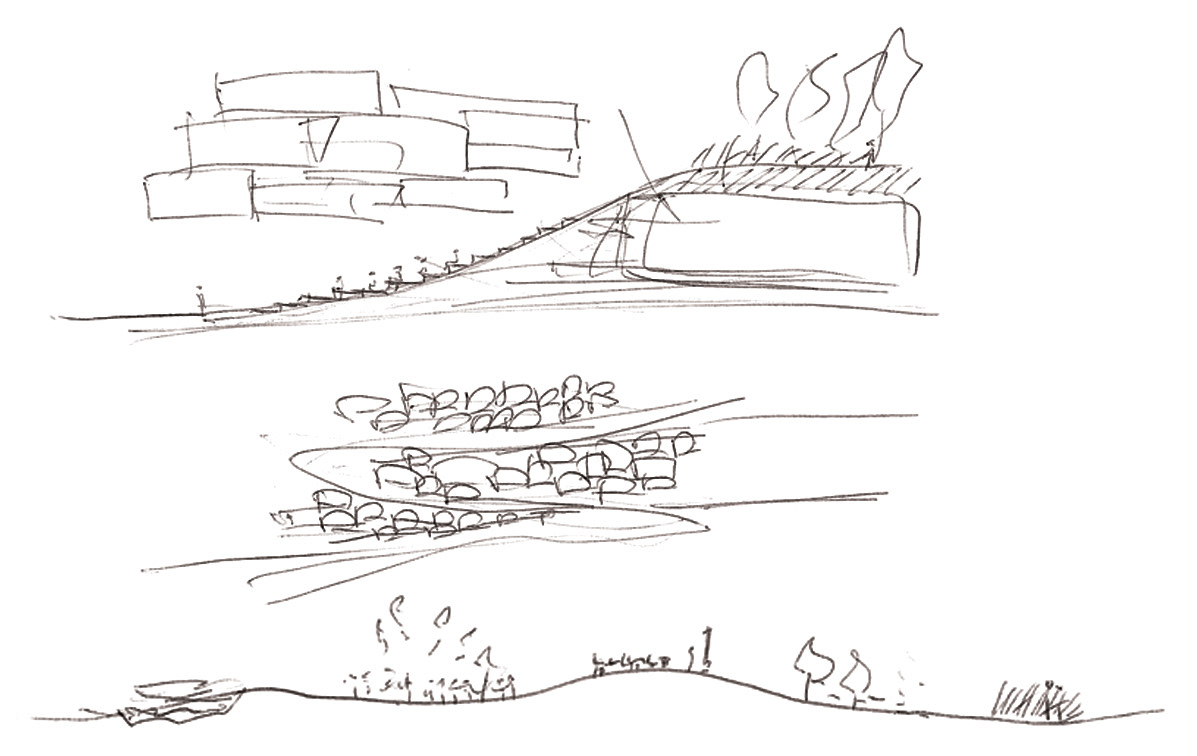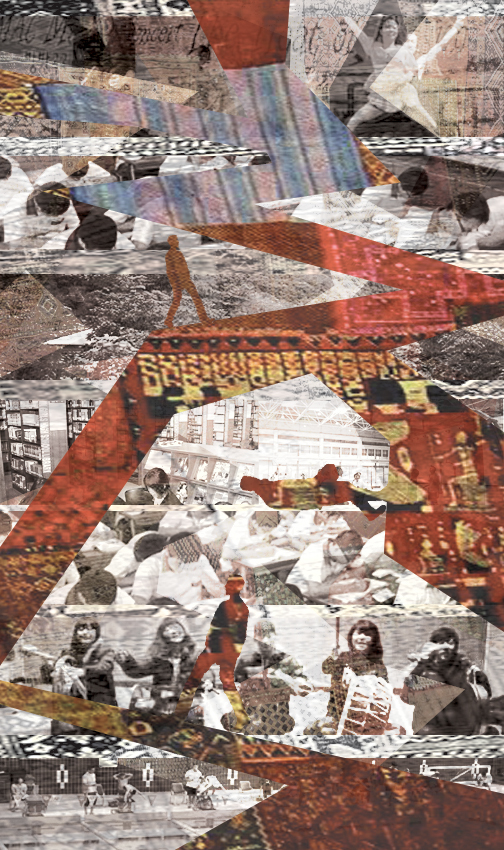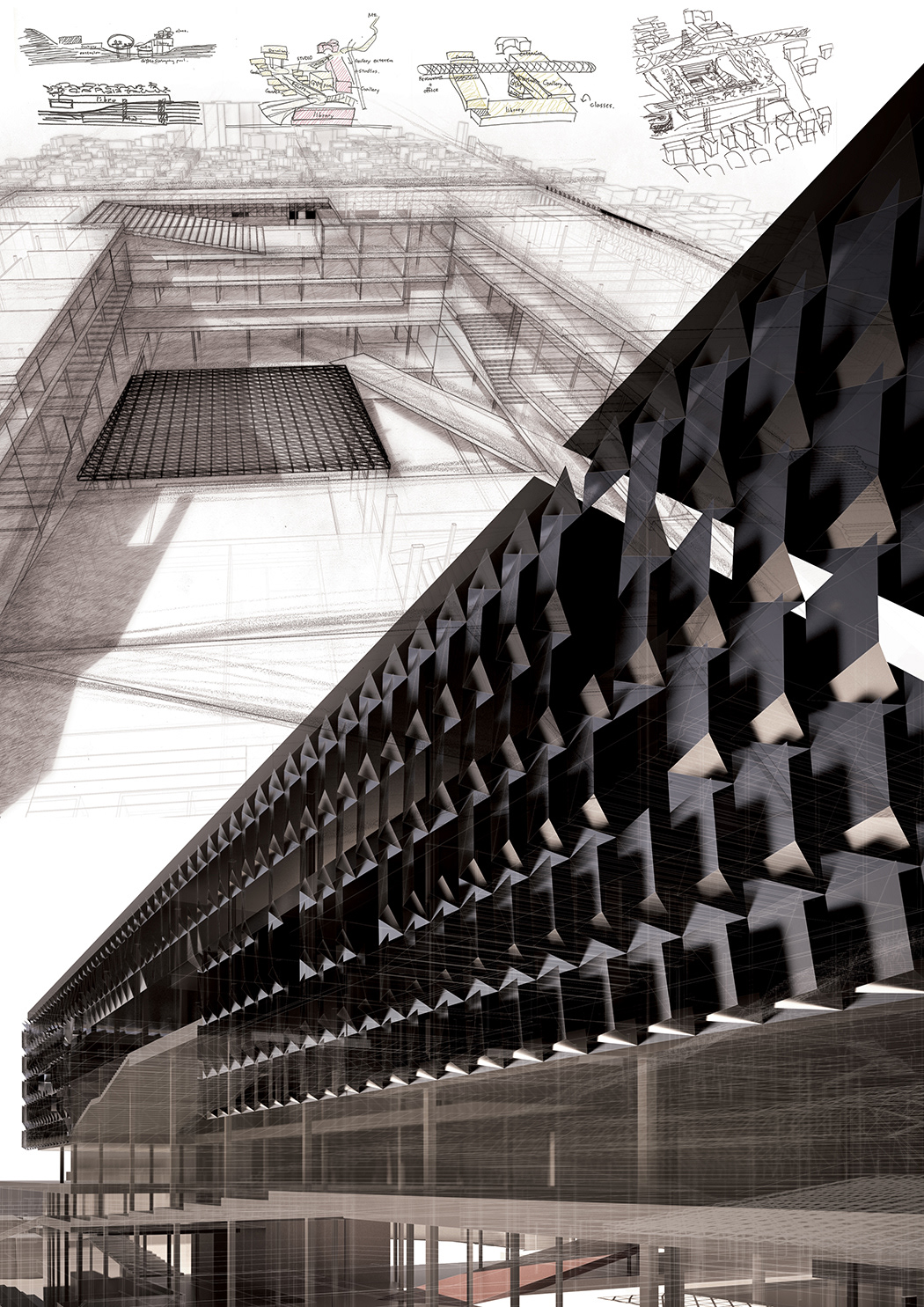2010, KNU
Instructor : Yong-seo Park, Hong-jik Wu

The challenge of this curriculum was designing a visionary school in changing circumstances. Sometimes, I feel that all we can do in the architectural design process is to adjust traditionally required spaces and give name tags to each of the rooms, because there is such strict guidance for designing buildings such as schools in this curriculum. Yet in an academic design studio, I can approach somewhat liberally and guidance can be interpreted more flexibly. Still, the given size of classrooms, playground, and corridors cannot be changed under any circumstances. Not to lose the fundamental values of certain programs of architecture, I have to start with the essential meaning of the program. Then, I included some fundamental but fathomless questions such as what the school is for.


Education can never be separated from the conception of interrelationship. Whatever the subject, we learn from others and isolation makes both learning and teaching useless and futile. Learning and teaching are not separated. It follows that, for students, learning could become an active process rather than a passive one, as the traditional model of the education system is in Korea. Given that learning is connected with the conception of relationship, the space of school can be interpreted as the field of interrelationship, providing students a place to grow by sharing mutually with others. For designing the school, the point that I can approach from may settle in controlling the interrelationship between the activities in the classrooms, the school and its neighbors. The school has the possibility of extending its process of learning and teaching towards neighbors, and, therefore, influencing its neighborhood in a good way. The traditional Korean system of education has tended to drive students into just one goal, whether they want to or not, admitting them to university. As a result, students tend to belittle the value of learning and cannot utilize it actively in their lives. Education should be connected with the students’ lives, and, in in this sense, the conception of the school as social infrastructure may be regarded as crucial to a productive and happy life. Life, education, and relationship with neighbors should be set as the principal values of the school, therefore. Which means that the school can be intertwined with the neighbors in program and activities, thereby extending its scope of value. Then, there will be a chance to develop or grow not only for the students but also for the society itself. This is how I interpreted the school as social infrastructure. In this context, the site settles in a steeply inclined situation, between a residential area and a mountain beyond a high speed road. To solve the problem of connectivity through the different levels could determine the arrangement of the architecture itself.


»Rug education
A rug is flat and a ‘rug education’ may be understood as the typical mode in open education. An open education class may start with a rug meeting, during which students, sitting on the rug, gather and discuss every aspect of daily tasks. Students and teachers are in a horizontal relationship. This concept can be extended to a broader meaning of the field of interrelationship --a continuous uniform floor, which can integrate different aspects of learning processes, and with other programs as well.






»Adaptive Surface
Given that the learning activities can be active processes, the spaces for the school can hardly stay in rigid circumstances. Meanwhile, the nearby low-rise residential area forced the school to have somewhat opaque surfaces for preventing privacy problems, while natural light is still needed. Therefore, I decided to put repetitive parametric surfaces on outer side of the school, which is in turn solve the necessity of opaqueness, the natural light, and adaptability at the same time. As a result, the shadowing was incidentally unique and striking, in my opinion. Incidence, in the procedure of designing architecture, might give a transcending inspiration to architects insofar as its circumstances or conditions are nicely, and intentionally, designed.





